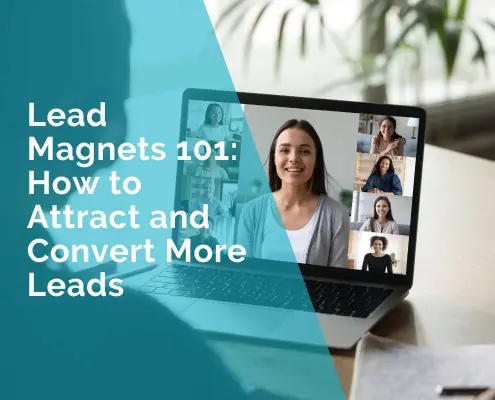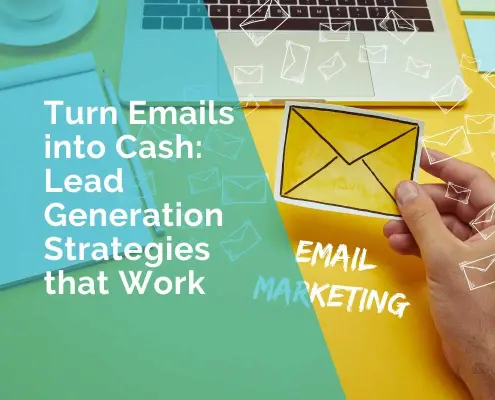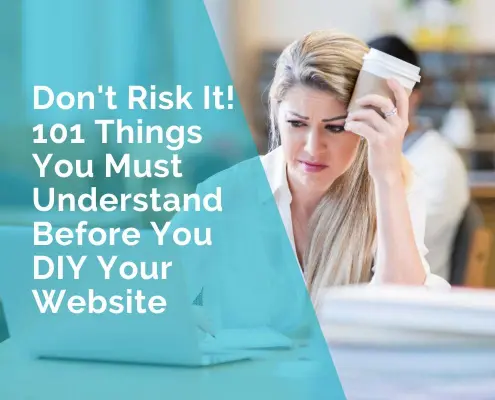How to Grow your Website: A Realistic Timeline with Practical Tips
Starting a website from scratch is no easy feat. The way the internet is set up today, the best method for growing website traffic is to boost your site’s visibility on search engines. To do that, however, you need plenty of referring domains from other high-authority websites.
For many of us, we lack the digital connections needed to ensure our domains are seen as authoritative from the get-go. And if you’re managing an eCommerce business, you likely don’t have the capital to wait for your rankings to grow naturally, or to pay for high-authority referring links.
So it all boils down to rolling up your sleeves and doing the work required to grow traffic the old-fashioned way: by providing value and providing it consistently. How do you do that? We’ll be answering just that question today by sharing a full and realistic approach to launching and promoting your very own website.
Here’s what lies ahead on your journey as a digital entrepreneur.
Pre-launch
Set up your launch timeline
If you’re operating with a limited budget, then it pays to map out your development timeline early to determine where you can expect to start earning from your website. Here, we recommend using a 2025 diary and physically writing down all the performance goals you’d like to achieve and when you ideally want to hit them.
Using an annual planner to track these goals is ideal because you can plan week-by-week. Your dedicated planner for this project can also be used to record your content calendar and the content you’ll be publishing in relation to each performance milestone. We’ll touch upon how to organise a content calendar in more detail later on.
Set up your website assets
With your timeline in place and performance goals established, it’s time to start loading up all the rich media content you’ll need to ensure your site is well-presented in time for its launch. For eCommerce business owners, this is the phase of the process that will require you to finalise all the product images and other promotional photos/videos that you’ll need to really showcase your product offerings.
It’s not enough, however, for your product photos to be well-shot. They also need to be styled and formatted to appeal to your target markets. Low-quality product shots can sabotage an eCommerce venture before it even has the chance to get off the ground. Contrastingly, great quality shots (and plenty of them!) can feasibly help generate interest in your products for years to come. In this regard, high-quality product shots and videos are a robust investment in your digital business.
Your site assets will naturally also include brand assets like .png logo files, site icons, navigational buttons, and any other clickable assets that make up all the finer details of your website branding. Once again, ensuring that all these files are high-quality and high-resolution is vital for your website making a strong first impression. And a strong first impression is paramount to gaining the trust of your target demographics online.
Finetune your user experience and sitemap
Another component of gaining consumer trust when it comes to digital enterprise management is ensuring that your platform (in this case, your website) is easily accessible and navigable. Having an intuitive sitemap is one half of this equation – the other half is investing in a streamlined and satisfying UX design (or ‘user experience’ design) for your website.
Truthfully, the discipline of website design is a bit more linear than designing an app, namely because HTML web pages have their own limitations. Jumping from web page to web page will require reloading rather than animated transitions or anything more fancy.
In fact, you want to make sure that your site’s UX is as simple and easily understandable as possible, both for supporting the navigability of your site, but also for making sure your website’s loading speeds stay reasonable. The more spam or bloat in your site infrastructure, the longer your site’s page loading speeds will be, and the higher the likelihood that site visitors will just give up on exploring your domain.
Slow page loading speeds are also actually recognised by Google’s algorithm when looking for relevant search results. In other words, your site could be super well-optimised to rank for all the keywords related to your products or services – but if your pages load slowly, then Google’s going to recommend that searchers look elsewhere instead, and your domain can then potentially miss out on first position rankings on search engine results pages.
So test your site’s UX, sitemap, and page loading speeds routinely both in the lead-up to your launch and even post-launch. This can help you maintain a proactive approach to identifying UX faults before they have the chance to wreak havoc on your domain’s rankings and traffic stats.
Set up your social media profiles and EDM infrastructure
How do you build up hype for a website pre-launch? By promoting it on social media, of course! You’ve probably seen your fair share of those ‘Coming Soon’ Insta profiles and other pages that promote a particular ‘lookbook’ aesthetic in the lead-up to a business launch. These promotional tactics can actually help digital entrepreneurs build up a loyal follower base from the very beginning, ensuring that once your site launches, you’ll already maintain good preliminary organic traffic, and perhaps even some traffic from referrals – again, more on this later.
Setting up your social media profiles before your site launch is a great way of generating buzz and ensuring that your brand is visible to not only potential future customers, but also bloggers, influencers, and digital publications or other figures in the modern press landscape who you may be able to partner up with in the future. These connections are vital to promoting your business both in its earlier developmental stages as well as during sales periods – basically anytime your site could benefit from some organic promotion.
And speaking of organic promotion, if you want to ensure that you have a strong customer base from the get-go, designing a customer journey that directs your social media followers to your website pre-launch can be a great way of building up your mailing list for EDM (electronic direct mail) marketing campaigns.
Establishing your company’s presence on social media and sending welcome emails (perhaps with promotional codes to use at launch or other incentives) to early subscribers also helps provide an added air of legitimacy to your business – something that every digital enterprise can never have too much of.
Create a well-optimised content calendar
A website is only as strong as its content, because high-quality content is how you generate engagement online. When we talk about providing value and providing it consistently, however, it pays to maintain a strategic approach to developing and publishing content for both your website and social media. This is where a well-optimised content calendar can be a vital asset to your website and brand.
Basically, a content calendar helps ensure that you take advantage of any promotional opportunities that come up over the course of your site launch timeline – and beyond. A strong content calendar, for instance, identifies calendar dates and other events (i.e. local festivals, international events like the Olympics, or even school holiday dates, etc.), to coincide with particular pieces of content in order to maximise the impact of that content.
Having a content calendar can also greatly simplify the process of maintaining not only your site updates but also your social media feed, as well as ensuring that your published site content maintains plenty of internal links to other pages across your website. Simply put, developing a thorough content calendar helps you not miss any opportunities to provide valuable content to an audience that’s ready to receive that content.
Post-launch
Publish and promote your site content
Upon launch, the first thing you want to do is start publishing your backlog of info–rich content. Having this backlog ready to go is the main reason why the development of your content calendar should take place before your site launch.
Once your website has launched, however, it’s time to return to that content calendar to both cross off pieces as they go live, and also look to the future to see how else you can add to your growing collection of high-value content. This means building off of your existing content calendar, but also ensuring that your calendar stays flexible to account for any topical opportunities. After all, there are some events you can’t plan for when it comes to digital marketing. Staying flexible (and active in social media discussions) can help ensure that you can maintain a proactive and present approach to publishing and promoting your site content over the long term.
Secure referrals for your domain
If you’ve been working hard at producing high-value content consistently, then now is the time for you to be rewarded for all your efforts, namely in the form of referral links. Basically, referral links are external links (links on other websites) that point back to your own website. These links are great for solidifying your site’s presence as well as its authority, as Google naturally assumes that sites with a high volume of high-authority referring links are naturally going to be a high-authority site themselves.
It’s important to keep in mind, however, that not all referring links are the same. In other words, having a link on Vogue isn’t the same as having a link on a local mum blog. Whilst both links have their own value, they will affect your site’s authority metrics in different ways. This is why communicating with the press is vital for boosting not only recognition of your brand, but your site’s digital visibility as well.
Thankfully, if you’ve managed to build an attractive and functional website with a killer product selection to back it up, you should be able to accrue some referral opportunities with local bloggers and publications. Look for any other social media profiles or local papers that promote local businesses periodically to see if you can get a mention anywhere.
A great pro tip: leverage digital marketplaces like Etsy and Amazon to also get high-authority links to your website. Yes, it’s infinitely better to make sales directly through your website, but having a presence on these high-authority sites can help bolster your Google visibility in your website’s earlier days.
Manage your website using SEO best practices
Of course, referring links are of no value if your site isn’t accessible or optimised to rank on Google. And every year (and with every core update), Google’s ranking parameters get increasingly sophisticated with the purpose of combating spam. So how do you stay in Google’s good graces? By maintaining SEO best practices.
SEO, or search engine optimisation, is the process of optimising your website to rank on search engine results pages by hitting site performance and usability parameters that are directly related to attaining first position rankings. Some of these parameters include:
- Establishing clear URL slugs for all web pages
- Establishing relevant page titles to match URL slugs
- Maintaining structure to site content (i.e. using header tags for headings and ensuring content stays cohesive)
- Including meta titles and meta descriptions for all web pages
- Including image alt-text to ensure images are ‘readable’ by site crawlers
- Utilising schema markup to ensure site content is backed by structured data for site crawlers
You can learn more about the benefits of some of these technical SEO basics here in our full guide on 101 things you should know when designing your own website.
Grow your mailing list
As we’ve mentioned, building up a mailing list for your website is one of the best methods of maintaining engagement with your target demographics. This is because EDM campaigns allow you to send marketing messages directly to potential customers or repeat customers.
The question, however, is how do you incentivise consumers to join your mailing list? Thankfully, our small business digital marketing experts have a few answers to this question. Here are just a few ways you can encourage your social media followers or even site visitors to sign up to your subscriber list:
- Provide coupons or other cost incentives to join your mailing list
- Ask website visitors for the email when they’re looking to leave feedback/product reviews
- Establish a high-value blog or email newsletter that readers can subscribe to
- Establish a free once-off resource (i.e. an ebook, info-rich PDFs, etc.) that users can access by sharing their email address
- Host an online competition with one of the entry conditions being to sign up to your mailing list
- Share content on social media that requires an email address to access
Stay active on social media
Finally, if you’ve been able to build your engagement online, you’ll naturally need to maintain this engagement over the future. Whilst publishing new site content can help prevent your website from growing stale, it’s important to make sure that your site updates are shared on social media as well. This cross-platform approach to promoting your website helps maintain a robust digital footprint for your business.
As your social media profile grows over time, you’ll actually find it easier to stay active on these platforms. After all, sharing stories to an audience of 1000+ followers is going to result in far higher metrics than a few hundred. That being said, it will take some time for your socials to grow, and press exposure and other high-authority referring link opportunities can help you get there – as will online promotional initiatives like contests or partnerships with influencers, bloggers, and vloggers.
The main benefit to building your social media presence, however, is ensuring that you can maintain a strong network of consumers and potential partners. You’ll find that your social media community is in truth, the lifeblood of your site traffic. This can be confirmed by simply jumping on Google Analytics and assessing where most of your traffic is originating from – be it organic search channels, referring links, paid search channels, or the biggest contenders for eCommerce: social media and email marketing links.
Maintaining your website’s growing momentum
The responsibilities of a website manager post-launch is ultimately, to both maintain and grow the momentum that occurs upon the site launch. In truth, this is a responsibility that’s never complete, as your website will continue to grow and change right alongside its users – and that adaptability will truly be a valuable asset to your digital enterprise.
So long as you follow this timeline and all the tips we’ve outlined for both your pre- and post-launch site calendar, you should be able to grow your traffic stats, add to your follower count, and above all, build up sales/conversions through your site over the long term.
***
Janis Frost












